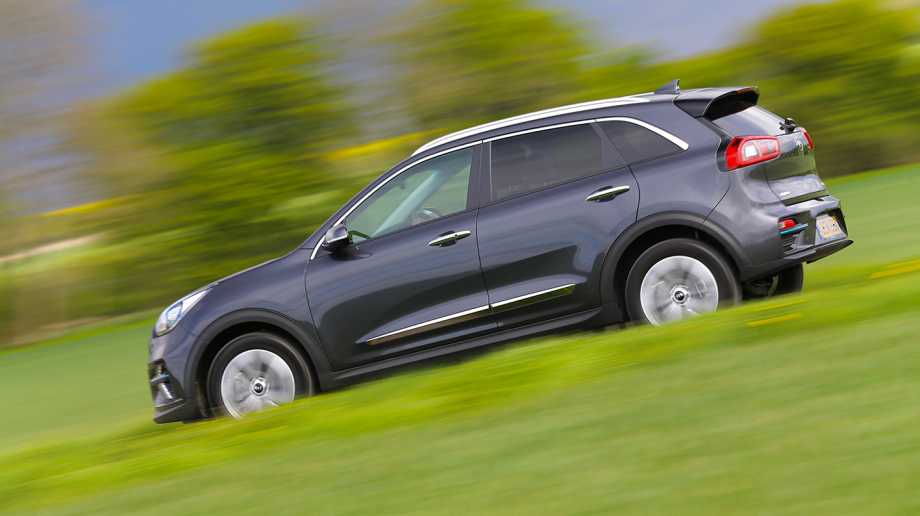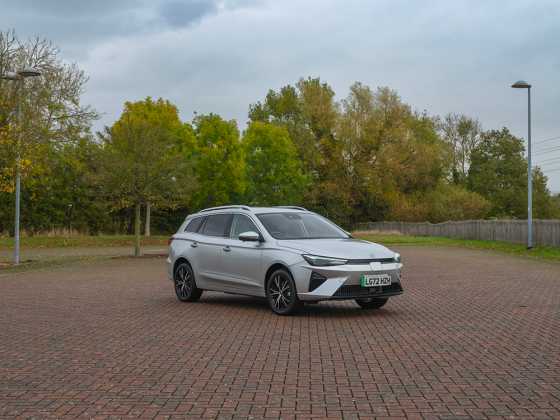Road Test: Kia e-Niro 64kWh

Kia’s second all-electric car, the e-Niro completes the electrified Niro range of models. Richard Gooding discovers that the new arrival is an affordable and practical long-range machine
What is it?
The Niro was Kia’s first range of cars to be built on a platform exclusively designed for electrified cars. The petrol-hybrid and plug-in hybrid Niros were the first to arrive, the all-electric e-Niro enjoying its debut at the 2018 Paris motor show. A total of 10,000 e-Niros have been sold since then and such was the demand for UK models on launch in April 2019, the initial allocation sold out within weeks. Halied an award-winner from all corners of the UK motoring press, the e-Niro is Kia’s second all-electric car, following the first-generation Soul EV of 2014. A 39kWh e-Niro is sold in selected markets, but the UK range is limited to the 64kWh model.
How does it drive?
As with the Niro Hybrid and Niro PHEV, the e-Niro is a five-door, five-seat compact crossover. The basic car’s smart looks are made more appealing on the all-electric version by way of its blanked-in ‘tiger nose’ grille and charging flap, arrow-shaped LED daytime running lights and subtle blue accents in the bumpers. Silver roof rails, gloss black detailing and diamond-cut alloy wheels further lift the e-Niro’s visual allure.
Inside, the interior quality matches that of the outside, with high-grade fixtures and fittings and sensible and well-designed ergonomics. A 7.0-inch TFT digital colour screen imparts information to the driver, with myriad settings for efficiency, including driving range and battery status. A redesigned centre console features a ‘'shift-by-wire' rotator dial drive selector which controls the single-speed gearbox. As well as being nicely finished, the e-Niro is practical, too, its 451 litres of seats-up luggage space beating that of the Niro Hybrid and Niro PHEV. There’s 1,405 litres with the seats down, just enough room to squeeze in two adult bicycles.
As with almost all electric cars, the e-Niro offers quite startling performance from rest. The 291lb ft (395Nm) of torque is instant, and the 150kW motor powers the e-Niro to 60mph in 7.5 seconds. The power is smooth, too, and the car feels faster than its body shape would have you believe. Most electric cars are quieter than their internal combustion-engined counterparts, but the e-Niro’s overall refinement seems to be at a level beyond its price point. And while the ride is on the firm side, it’s rarely uncomfortable, and the handling is engaging enough for most. Even with a low centre of gravity due to the batteries being placed under the floor between the front and rear axles, the e-Niro is no sports car, but it is still fun. It’s also a supremely-rounded machine capable of doing most things very well.
What range does it have?
Sharing much of its powertrain with the Hyundai Kona Electric, the e-Niro has a WLTP-quoted official driving range of 282 miles, one of the longest ranges on the ‘affordable’ electric car market. It’s a realistic and highly usable range, too, and on occasion when the battery was full, our test car often displayed a range which eclipsed that. During a week with car we easily achieved a range of 268 miles with some battery charge remaining. To potentially increase that already impressive all-electric distance, Kia also provides many on-board aids.
An Eco Driving Assistant System (Eco DAS) employs both coasting guide and predictive energy controls that use navigation traffic data to inform drivers of the best time to lift off the accelerator and coast to a junction, harvesting energy for future use. Three levels of regenerative braking are controlled by the steering wheel-mounted paddles which quickly become second nature to use, especially in urban environments. A further trio of driving modes – Normal, Eco, and Sport – allows drivers to tailor efficiency and performance to their needs.
How long does it take to charge?
Charging the e-Niro’s liquid-cooled 356V, 180Ah lithium-ion battery to 80 per cent takes 54 minutes on a 100kW DC fast charger, increasing to 75 minutes on a 50kW supply. Using a 7.2kW wallbox, the e-Niro’s battery can be refilled from flat to full in nine hours and 50 minutes. The slowest charge time of 29 hours (0 to 100 per cent) is from an AC 230V power supply. Kia supplies a pair of charging cables with the e-Niro: a standard three-pin plug cable is provided for domestic top-ups, and a Type 2 cable is included for when the car is refilled via a public or workplace charging point.
What does it cost?
Kia makes e-Niro choice very easy. The First Edition spec of our test car is no longer available, replaced with the similarly-equipped ‘4’ model. The only trim level available, the £34,495 (after deduction of the £3,500 government PiCG) e-Niro 4 has a high specification. A premium quality interior is one benefit of the new 4 trim grade, and other highlights include an auto dimming mirror, auto lights and wipers, electrically-folding door mirrors, front fog lights, heated seats and steering wheel, black leather upholstery, LED headlights with bi-function projection, rear parking sensors and 17-inch alloy wheels.
Further adding to the e-Niro’s upmarket ambience is a 10.25-inch colour touchscreen navigation system, which comes with European mapping and Traffic Messaging Channel. Kia’s Connected Services also bring TomTom Live traffic updates and speed camera location technology, and its UVO Connect system provides charging location and availability details, as well as connection compatibility. The UVO system can also be accessed via a smartphone app which also enables remote control of certain vehicle functions. There’s also a good-sounding 320W, eight-speaker JBL audio system, complete with subwoofer, and external amplifier, complete with Android Auto and Apple CarPlay systems. Wireless smartphone charging is also standard.
A raft of safety kit is also standard on the e-Niro. Forward collision and lane-keeping assistants help prevent accidents, and driver attention warning and adaptive smart cruise control systems allow complete supervision of the car on the move. As well as being loaded with lots of safety and functional equipment, Kia has paid attention to practical design features, too. The reversing camera sits on the rear windscreen wiper arm mounting for example – a very neat integration.
How much does it cost to tax?
As it is a zero-emission vehicle and emits no CO2, the Kia e-Niro attracts no VED charge in either the first year of registration or the years thereafter at current government-approved rates. The company car Benefit In Kind rate is 16 per cent for 2019/2020, falling to zero per cent for 2020/2021 under new government regulations. For 2021/2022, it rises slightly to one per cent.
Why does my fleet need one?
The Kia e-Niro is one of the most impressive cars to have passed through GreenFleet’s hands in recent months. With a Tesla-rivalling range at a more affordable price, higher interior quality and more kit than the US firm’s Model 3, and a ‘can do’ attitude, there’s very little that seems out of the e-Niro’s reach. Practical, well-made, and efficient, it’s a welcome addition to the electric car ranks.
The only potential sticking point is getting hold of one. A waiting list does still exist but Kia has been promised sufficient UK supply to clear the existing 3,000 customer backlog, with more to potentially come. If you can find e-Niro availability, though, you’ll discover a hugely rewarding and capable electric car with much to recommend it.









